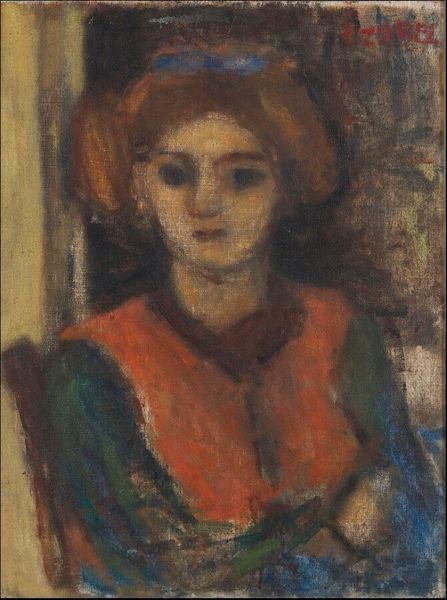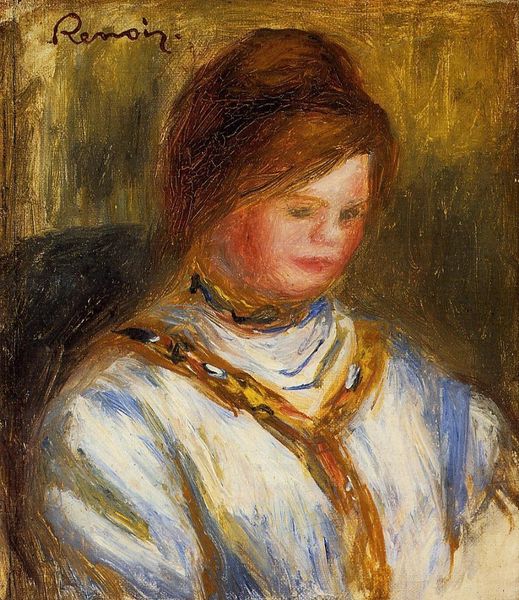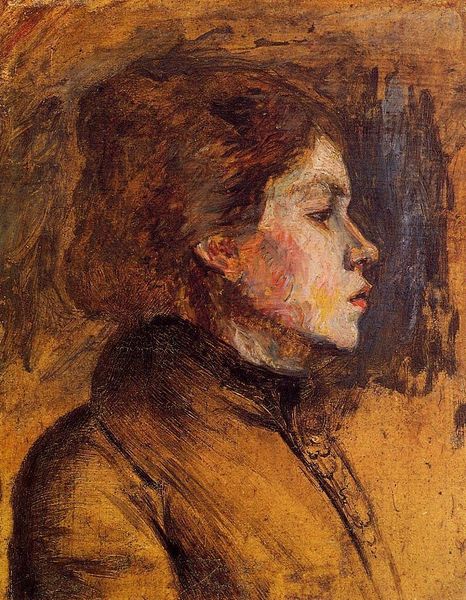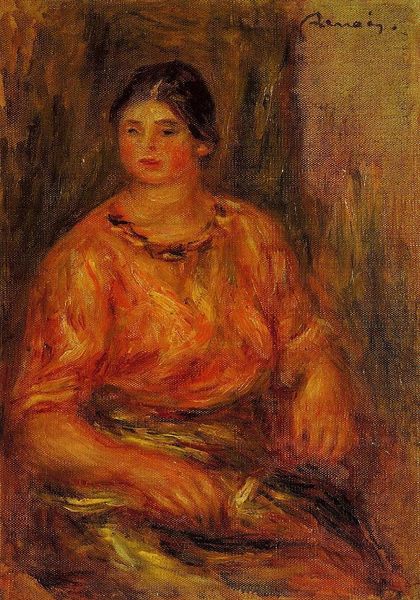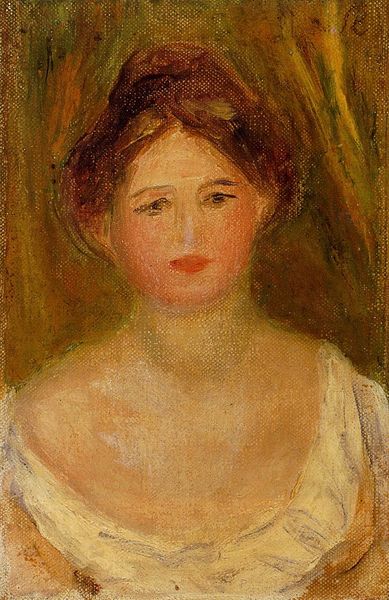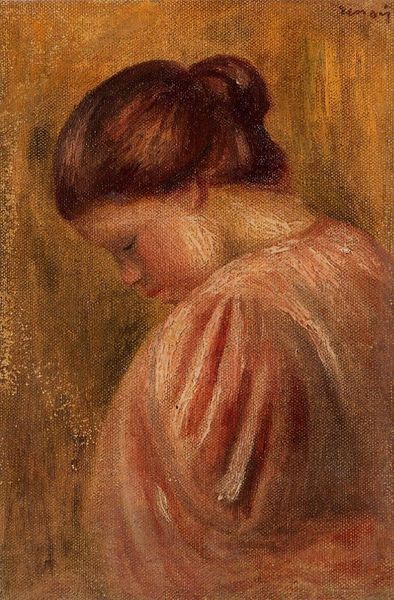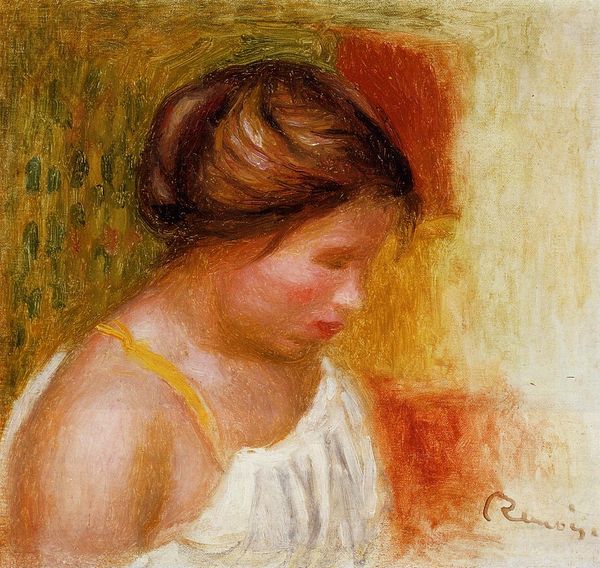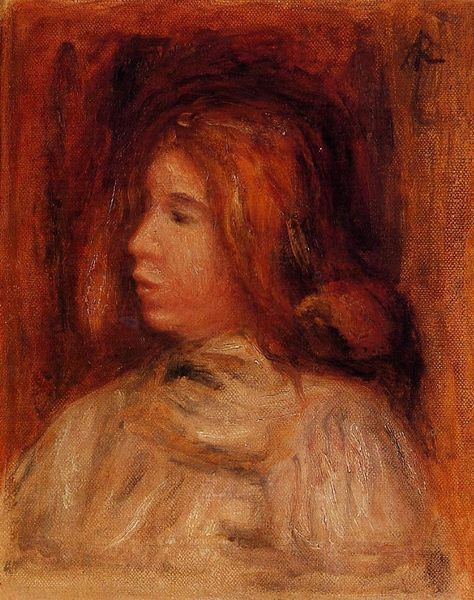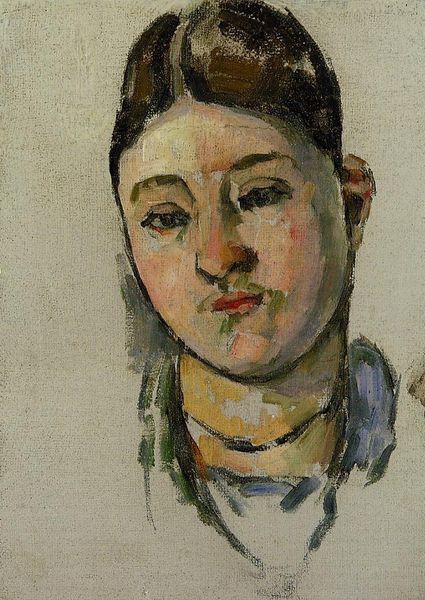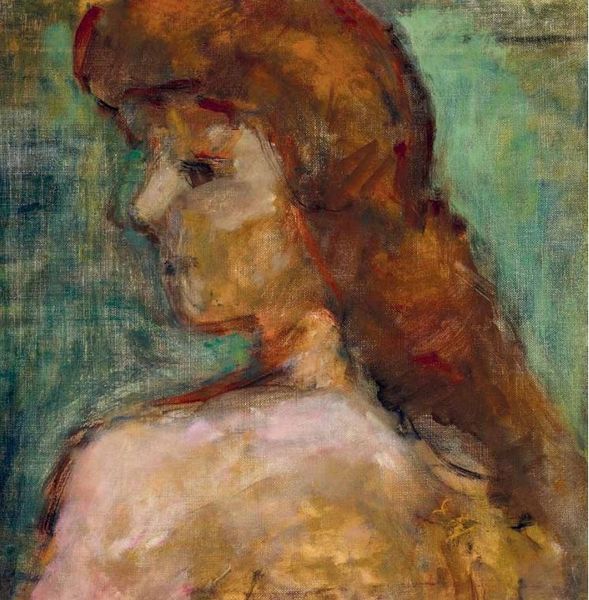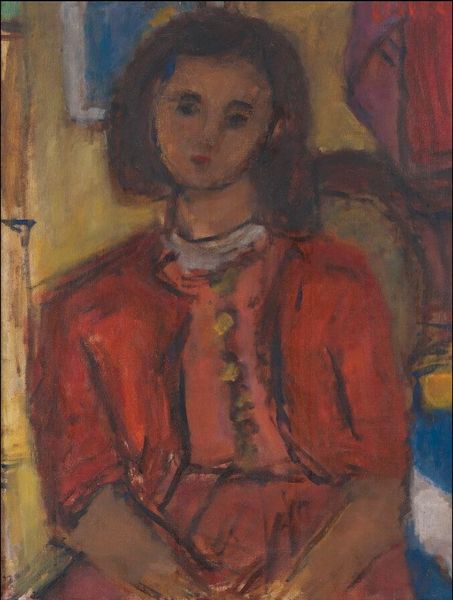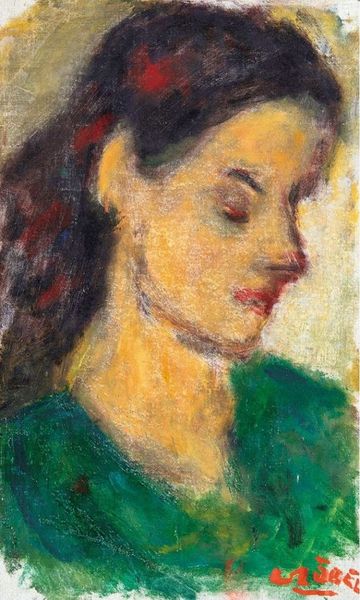
Dimensions: 30.16 x 22.23 cm
Copyright: Public domain
Curator: Looking at "Violette Haymann," a portrait painted around 1910 by Odilon Redon, currently held in a Private Collection, I'm struck by its intimate, almost dreamlike quality. What’s your immediate impression? Editor: A pervasive sense of quiet melancholy. The ochre palette is quite subdued, lending it a sepia-toned quality, while the delicate brushstrokes give it a somewhat unfinished feeling, like a memory fading. Curator: I agree. The surface is very evocative. Considering that Redon came of age during a time of significant transformation in artistic production, we can really consider how these social changes have impacted material innovation through mass manufacturing and ready-made commodities? Editor: Absolutely, but let's also examine the composition itself. The way Redon employs visible brushstrokes to suggest form rather than define it, pushes us to think about the artist's conceptual decisions. And note how her figure emerges softly from the muted ground, which makes Violette seem both present and ethereal. Curator: The painting certainly reflects Post-Impressionist and Symbolist trends of the era, but what I see at play here are all the social elements and resources that went into Haymann commissioning this artwork from Redon in the first place. Editor: However, observe how the formal devices contribute to the work’s overall psychological depth. Her closed eyes, combined with the delicate lace collar and loosely painted background, invite contemplation, drawing viewers inward to contemplate what might be private in that moment for Violette. Curator: I do think that Haymann and other upper-class women used their commissioned portraits as a mechanism to express individual autonomy within very restrictive conditions that continue to marginalize all members of society, historically speaking, and therefore have lasting economic and sociopolitical impact even today. Editor: It’s an interesting dialogue of context and form; on one hand there are processes of production, social systems, and economic autonomy for Violette Haymann in this artwork, but on the other we are dealing with how color, brushstroke, and composition work together to create an overall effect of introverted contemplation. Curator: So it does. Seeing how materials, economics, and access to production shape its reception is always enlightening. Editor: It has definitely shifted my perspective of this oil painting. I’m eager to now examine how that insight alters my interpretation.
Comments
No comments
Be the first to comment and join the conversation on the ultimate creative platform.
